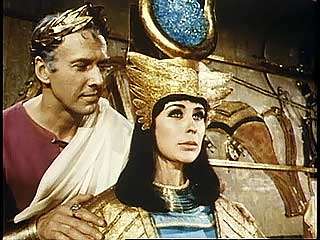

He agreed to protect Egypt and Cleopatra’s crown, pledging support for the removal of her younger sister and rival Arsinoe, then in exile. Antony, who associated himself with the Greek deity Dionysus, was seduced by her charms. According to the story recorded by Plutarch (and later dramatized famously by William Shakespeare), Cleopatra sailed to Tarsus in an elaborate ship, dressed in the robes of Isis. Mark Antony soon summoned Cleopatra to the Cicilian city of Tarsus (south of modern Turkey) to explain the role she had played in the complicated aftermath of Caesar’s assassination. In 42 B.C., after defeating the forces of Brutus and Cassius in the battles of Philippi, Mark Antony and Octavian divided power in Rome. Both sides asked for Egyptian support, and after some stalling, Cleopatra sent four Roman legions stationed in Egypt by Caesar to support the triumvirate. Meanwhile, a conflict was raging in Rome between a second triumvirate of Caesar’s allies ( Mark Antony, Octavian and Lepidus) and his assassins, Brutus and Cassius. Still, unreliable flooding of the Nile resulted in failing crops, leading to inflation and hunger. With her infant son as co-regent, Cleopatra’s hold on power in Egypt was more secure than it had ever been. Cleopatra III had also claimed to be associated with Isis, and Cleopatra VII was referred to as the “New Isis.”) She spoke as many as a dozen languages and was renowned for her “irresistible charm,” according to Plutarch.ĮXPLORE THE MYSTERIES OF ANCIENT EGYPT WITH HISTORY TRAVEL™. (This was consistent with the ancient Egyptian tradition of associating royalty with divinity in order to reinforce the position of kings and queens. After Caesar was murdered in March 44 B.C., Cleopatra went back to Egypt Ptolemy XIV was killed soon after (possibly by Cleopatra’s agents) and the three-year-old Caesarion was named co-regent with his mother, as Ptolemy XV. By this point, Cleopatra had strongly identified herself with the goddess Isis, the sister-wife of Osiris and mother of Horus. Sometime in 46-45 B.C., Cleopatra traveled with Ptolemy XIV and Caesarion to Rome to visit Caesar, who had returned earlier. He was believed to be Caesar’s child, and was known by the Egyptian people as Caesarion, or Little Caesar. Caesar remained in Egypt with Cleopatra for a time, and around 47 B.C. Entering Alexandria as an unpopular conqueror, Caesar restored the throne to the equally unpopular Cleopatra and her younger brother Ptolemy XIV (then 13 years old). After four months of war between Caesar’s outnumbered forces and those of Ptolemy XIII, Roman reinforcements arrived Ptolemy was forced to flee Alexandria and was believed to have drowned in the Nile River. In order to help her cause, Cleopatra sought Caesar’s support, reportedly smuggling herself into the royal palace to plead her case with him.įor his part, Caesar needed to fund his own return to power in Rome, and needed Egypt to repay the debts incurred by Auletes.

Meanwhile, after allowing the Roman general Pompey to be murdered, Ptolemy XIII welcomed the arrival of Pompey’s rival, Julius Caesar, to Alexandria. She raised an army of mercenaries and returned the following year to face her brother’s forces in a civil war at Pelusium, on Egypt’s eastern border. Soon after the siblings’ ascension to the throne, Ptolemy’s advisers acted against Cleopatra, who was forced to flee Egypt for Syria in 49 B.C. He had no way of taking power, however, and was captured and executed shortly after his mother's suicide. In 51 B.C., upon the apparently natural death of Auletes, the Egyptian throne passed to 18-year-old Cleopatra and her 10-year-old brother, Ptolemy XIII.ĭid you know? In the days between Cleopatra's death and Octavian's formal annexation of Egypt, her 16-year-old son Caesarion was officially sole ruler.

Her mother was believed to be Cleopatra V Tryphaena, the king’s wife (and possibly his half-sister). Born in 70 or 69 B.C., Cleopatra was a daughter of Ptolemy XII (Auletes), a descendant of Ptolemy I Soter, one of Alexander The Great’s generals and the founder of the Ptolemaic line in Egypt.

Much of what is known about her life comes from the work of Greco-Roman scholars, particularly Plutarch. Since no contemporary accounts exist of Cleopatra’s life, it is difficult to piece together her biography with much certainty.


 0 kommentar(er)
0 kommentar(er)
